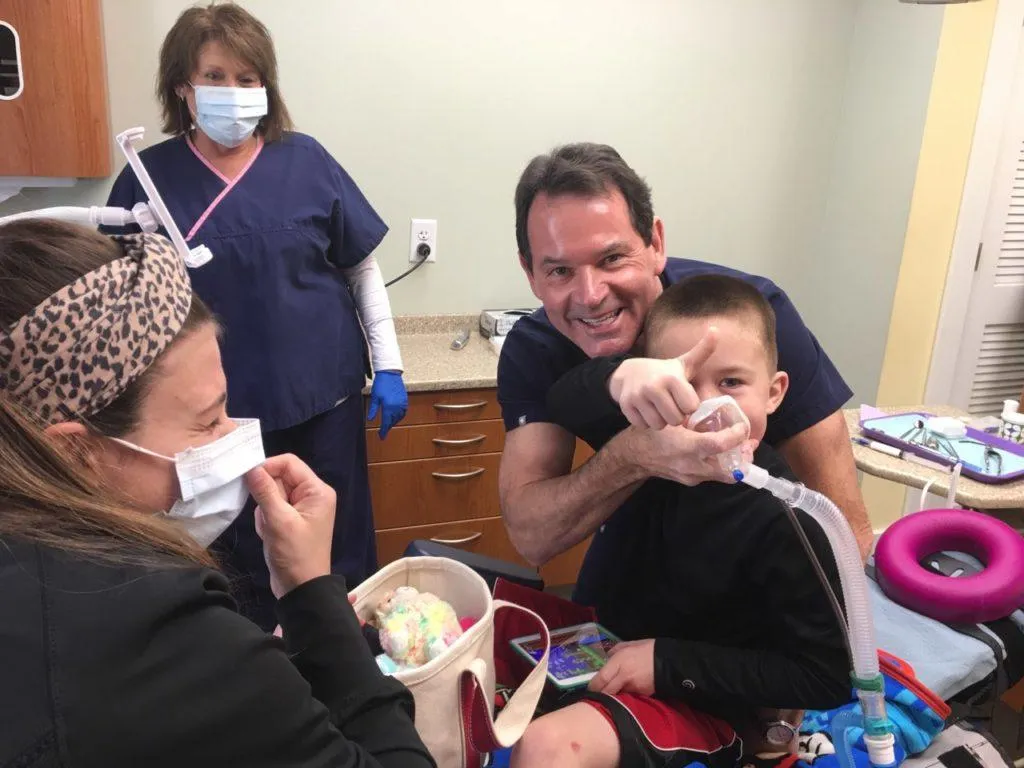Sedation Dentistry

Sedation dentistry refers to the use of sedation during dental treatment. Sedation is most commonly used during extensive procedures, for patients with dental phobia or for patients who find it difficult to sit still. There are different types of sedation, including nitrous oxide (“laughing gas”), IV sedation, oral sedatives and general anesthetic.
Sedation can range from the use of nitrous oxide to calm a patient to general anesthetics used to put patients to sleep. Patients with dental phobia, low pain tolerance, major dental treatment, physical handicaps or strong gag reflexes may require sedation. Procedures like fillings, crowns, bridges, root canals, extractions, cosmetic procedures and periodontal treatments often require sedation.
Sedation is endorsed by the American Dental Association and is an effective way to make many patients comfortable during their dental visit. Before using a sedative or anesthetic, it is important to tell your pediatric dentist about any medications or medical treatments your child is receiving. Before administering any sedative or anesthetic, your pediatric dentist will talk to you about the process of sedation and pre- and post-sedation instructions.
Laughing Gas
Nitrous oxide, more commonly known as laughing gas, is often used as a conscious sedative during a dental visit. The gas is administered with a mixture of oxygen and has a calming effect that helps phobic or anxious patients relax during their dental treatment. Because it is a mild sedative, patients are still conscious and can talk to their pediatric dentist during their visit. After treatment, the nitrous is turned off and oxygen is administered for five to 10 minutes to help flush any remaining gas. The effects wear off almost immediately. Nitrous oxide rarely has side effects, although some patients may experience minor nausea and constipation. Your pediatric dentist will provide you with pre- and post-sedation instructions.
In-Office Sedation
We recognize that for some of our patients, a visit to the dentist makes them a bit nervous. We offer nitrous oxide sedation for our more apprehensive patients, so they can relax while receiving the dental care that they need. For those requiring more intensive treatment, Dr. Hurst offers in-office anesthesia using Dr. Jeff Plagenhoef. Dr. Jeff is a board-certified pediatric anesthesiologist with Pediatric Dental Anesthesia Associates.
About PDAA
Pediatric Dental Anesthesia Associates
Dr. Jeff Plagenhoef is a board-certified pediatric anesthesiologist with Pediatric Dental Anesthesia Associates (PDAA). PDAA’s mission is to provide safe, affordable, and convenient pediatric anesthesia care to children in the dental office setting.
PDAA doctors are medical doctors who have completed four years of medical school and have received specialized training in anesthesiology. Their goal is to adhere to the same safety procedures and standards as hospitals and to make the experience as pleasant as possible for your child.


19 INVERNESS CENTER PARKWAY, STE 250, BIRMINGHAM, AL 35242
TEL: 205.969.7454
E-MAIL: [email protected]
2018 © ALL RIGHTS RESERVED | PRIVACY POLICY | TERMS AND CONDITIONS
Site by Trustway Marketing Powered by Kyrios Systems